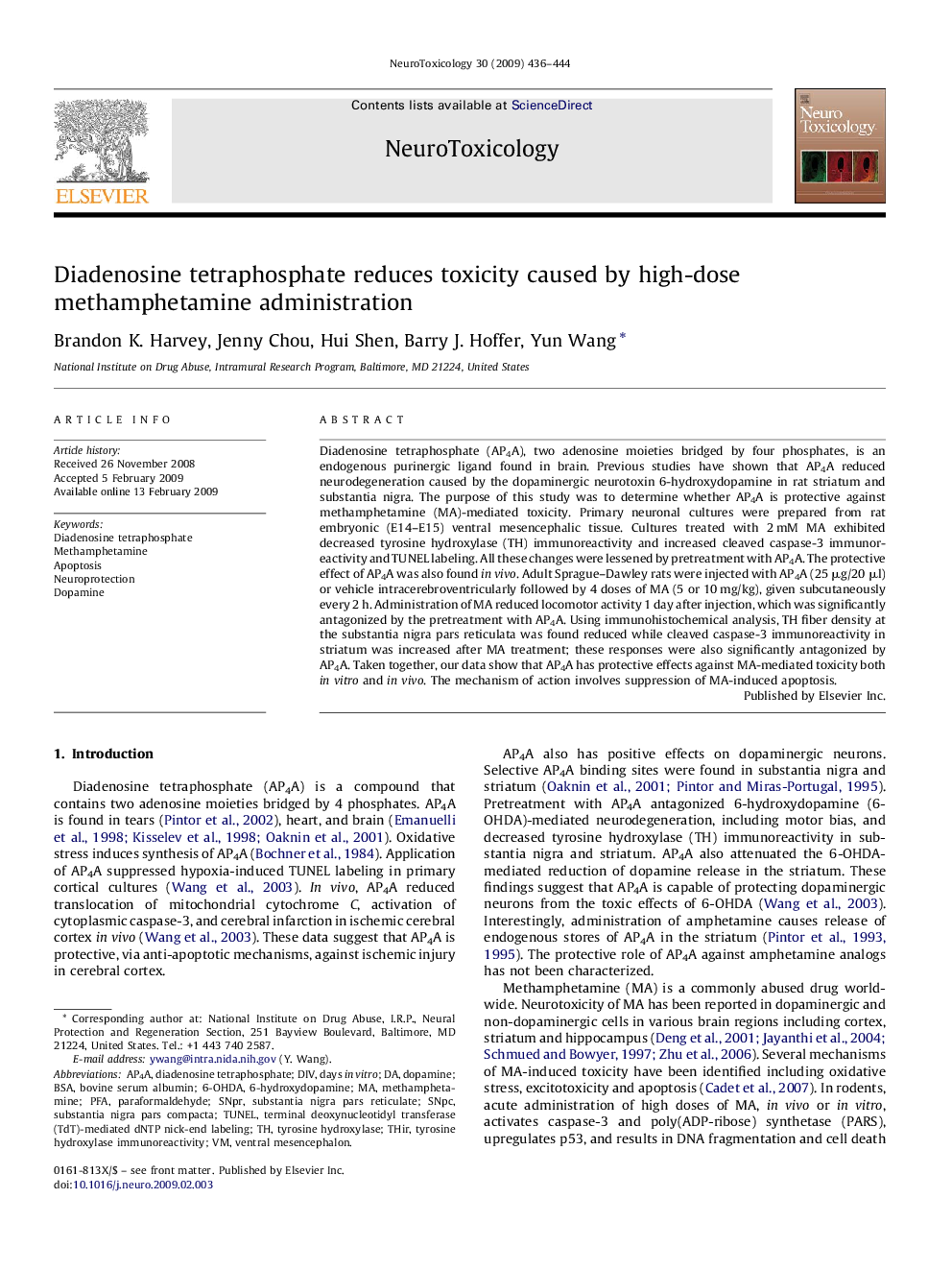| Article ID | Journal | Published Year | Pages | File Type |
|---|---|---|---|---|
| 2590698 | NeuroToxicology | 2009 | 9 Pages |
Diadenosine tetraphosphate (AP4A), two adenosine moieties bridged by four phosphates, is an endogenous purinergic ligand found in brain. Previous studies have shown that AP4A reduced neurodegeneration caused by the dopaminergic neurotoxin 6-hydroxydopamine in rat striatum and substantia nigra. The purpose of this study was to determine whether AP4A is protective against methamphetamine (MA)-mediated toxicity. Primary neuronal cultures were prepared from rat embryonic (E14–E15) ventral mesencephalic tissue. Cultures treated with 2 mM MA exhibited decreased tyrosine hydroxylase (TH) immunoreactivity and increased cleaved caspase-3 immunoreactivity and TUNEL labeling. All these changes were lessened by pretreatment with AP4A. The protective effect of AP4A was also found in vivo. Adult Sprague–Dawley rats were injected with AP4A (25 μg/20 μl) or vehicle intracerebroventricularly followed by 4 doses of MA (5 or 10 mg/kg), given subcutaneously every 2 h. Administration of MA reduced locomotor activity 1 day after injection, which was significantly antagonized by the pretreatment with AP4A. Using immunohistochemical analysis, TH fiber density at the substantia nigra pars reticulata was found reduced while cleaved caspase-3 immunoreactivity in striatum was increased after MA treatment; these responses were also significantly antagonized by AP4A. Taken together, our data show that AP4A has protective effects against MA-mediated toxicity both in vitro and in vivo. The mechanism of action involves suppression of MA-induced apoptosis.
